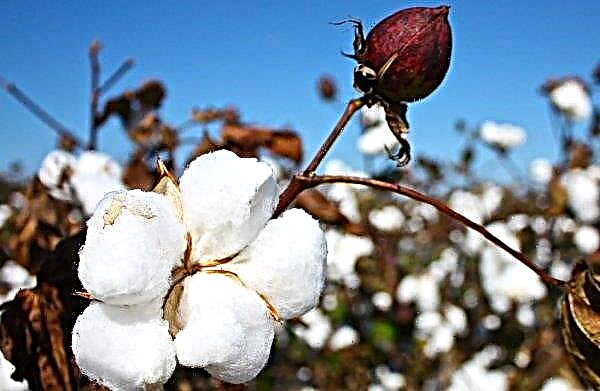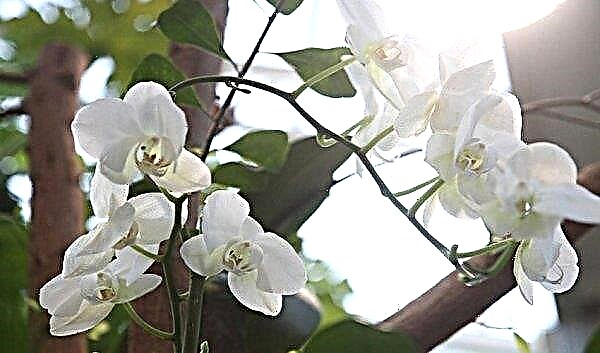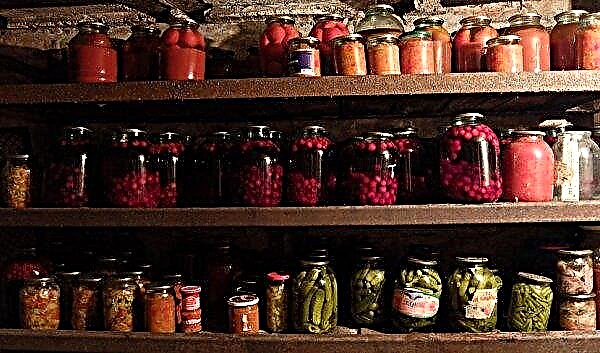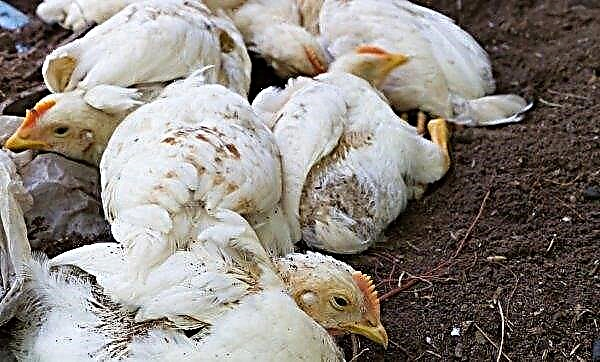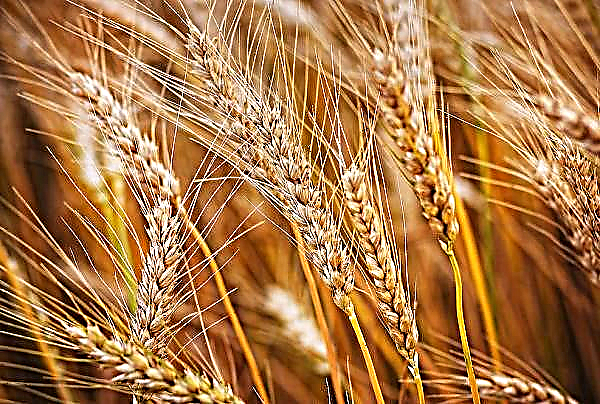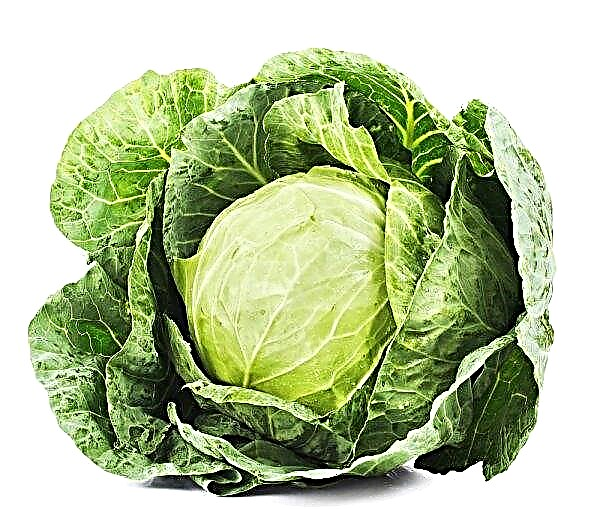Hydrangea is a very popular ornamental shrub, but not all gardeners know what care she needs in the fall, and how to properly prepare the plant for winter. You will learn about the details of this important process from this article.
Hydrangea care in the fall
Hydrangea is one of the most popular garden shrubs growing in our climate. It does not lose its decorativeness from July to frost, decorating the site with bright greenery, huge flowers of various colors or dry inflorescences. However, in order for the plant to remain healthy and beautiful, in autumn it needs proper care. At this time, the care of the gardener is a gradual reduction in watering, cutting, preventive treatment from pests and diseases.

Autumn and spring pruning
Before winter shelter, hydrangeas should remove all shoots that are dry or damaged by diseases and pests. At the same time, it is very important not to cut healthy branches - this will need to be done in the spring.
There are several types of culture: some plant buds on the shoots of the current year, others form inflorescences on old branches. Depending on the features, the date of bush pruning is selected. Some varieties do not need to be shortened at all (for example, climbing or woody), while in others, truncation of the stems is necessary for good growth.
Hydrangea pruning rules:
- Bouquet - since buds are planted on annual shoots, pruning is required. It is best to do this at the turn of March and April, the optimal date is chosen depending on the weather. If spring heat comes very early, the procedure must be performed before the buds begin to bloom. The first cut is done in the second season after planting, shortening the stems by 2–4 cm. Next, each spring, young shoots are pinched using a secateurs 1/3 of the length, while older and thicker ones are 2/3 of the length. Thanks to the procedure, next summer the bush will become dense and will tie more inflorescences.
- Garden - This variety does not like haircuts, and gardeners are limited only to the removal of broken branches. The slice is carried out over the last leaf. It is best to carry out the procedure immediately after flowering or wait with this type of work until next spring.
- Shrubbery - the buds develop on the shoots of the current season, so it is important to carry out strong pruning. Every year in March they are removed very low, about 10–20 cm above the ground, while removing all weak and damaged branches. Such an agronomic technique contributes to the formation of strong stems with beautiful, large inflorescences. This species gives root shoots, and they gradually take up more and more space.

Top dressing
Garden hydrangeas must be fed before wintering, since correctly applied fertilizers help the shrub to be better preserved.
Early varieties begin to feed in August. This month they finish their growth, due to which watering is reduced and gradually decreases completely. A dry growing season is necessary in order for new buds to form, which will bloom next year. In early September, plants also receive nutrition, which allows to accelerate the flowering period. After trimming, food is not introduced until new shoots appear..
The most successful time for feeding all varieties of culture, including paniculate and tree-like, is precisely the end of summer and the autumn months. Under each bush make 15-20 kg of manure or rotted compost.
Fertilizer affects the abundance of blossoming buds. Deficiency of nitrogen, phosphorus, magnesium and iron is the cause of poor growth and the formation of a small number of inflorescences.
The reaction of the soil in which the bushes are grown determines the color of the hydrangea petals. Acidic soil (pH from 0 to 7) will give them a blue tint, and pink flowers will grow on alkaline soil (pH from 7 to 14). To achieve the first color option, gardeners acidify the soil around the trunk, feeding the roots with ammonium sulfate or potassium sulfate. The same effect is achieved by preparing a solution of alum potassium or aluminum sulfate for watering the plant. You can buy special fertilizers in garden stores to give the petals a blue hue.

In hydrangeas, the demand for soil composition is quite specific - it practically all versions of acidic soil are suitable, having good hygroscopicity, that is, capable of absorbing moisture and passing air. Given these requirements, it is advisable to land in peat or humus soil.
You can’t add lime to the soil that “dampens” acidity, the decorativeness of the plant may suffer. In addition, on a neutral substrate, the bush may develop chlorosis, which occurs due to low absorption of iron.
Preventive treatment for diseases and pests
The best way to prepare the bush for beautiful flowering in spring is to provide it with suitable growing conditions in accordance with the requirements of the culture. But good care will not help if the plant is sick or pests attacked it.
Hydrangeas can be affected by fungal diseases:
To combat fungal diseases in the next season, plant growers sprayed shrubs with special preparations. It is necessary to carry out sanitary cleaning of the garden: to collect and burn diseased fallen leaves so that mushroom spores do not winter in them.
Did you know? From the flowers of the bush gOrtension Serrata Buddhists make tea and drink sweet as part of a cleansing ritual.
Hydrangeas are often susceptible to a physiological disease called chlorosis.. The main symptom is wilting and yellowing of the leaves due to improper pH of the substrate. As a treatment, acidification of the soil is necessary and root dressing (spraying of the aboveground part) of the plant with chelating iron is necessary.

Pests attacking hydrangeas:
- Aphid - tiny black or gray insects living in colonies and feeding on stems and not lignified tips of young shoots. With a large population of the bush, it is necessary to spray insecticides commercially available ("Karate", "Aktara"). Secondary treatment, as a preventative measure, is carried out in the second half of September or early October, as soon as the plant loses its leaves. This will prevent the parasites from overwintering in the kidneys and under the bark.

- Spider mite - a very small pest, which it is very difficult for a person to see with the naked eye. Its presence is produced by the characteristic web between the leaves and in the forks of the branches, at the same time the leaves turn yellow and dry early. To prevent the mite from wintering on the plant, it is worth spraying it in September or October with one of the oil preparations (Promanal, Emulpar, Treol).
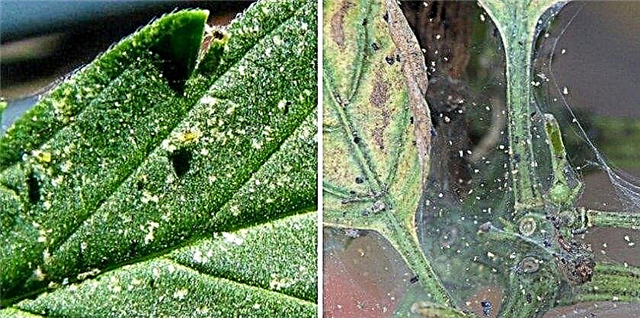
For preventive and therapeutic measures, you need to choose a dry, calm day. Preparations diluted in accordance with the instructions attached to them by the manufacturer are poured into the pump sprayer tank, which is able to convert the liquid into fine watery dust. In this case, the gardener must take all measures for his own safety: Wear clothing that covers the entire body, gloves, headgear, high shoes, goggles and a respirator if possible.. Protection is needed in order to completely eliminate human contact with chemicals.
Watering cessation
Hydrangea develops well in moist soil and requires about 20 liters of root water weekly in the heat. In order for the plant to survive the winter without problems, by the end of summer it is necessary to gradually stop watering, and from the second half of August switch the shrub to a "dry" rations. All fall, until the frosts, he will have to do with natural precipitation. Due to this limitation, the rapid growth of the aerial and root parts will cease, and the shrub will begin to prepare for the rest period.
 Preparation for wintering for a flower grown in a pot also begins in the second half of summer, when the gardener gradually reduces, and then completely stops watering
Preparation for wintering for a flower grown in a pot also begins in the second half of summer, when the gardener gradually reduces, and then completely stops watering
Preparing hydrangea for winter
Gardeners should choose varieties appropriate to the growing region.. Plants that calmly respond to low temperatures are suitable for the northern regions. But you can grow sensitive varieties in colder conditions, if the gardener protects them properly.
It is also very important to properly prepare the culture for the cold season. Hydrangeas need to enter dormancy before winter. To help her, in mid-August, fertilizer ceases to limit growth, and in October, the buds open, which weaken the bush, are manually removed.
Hydrangeas of all varieties form flower buds in the summer of the previous year.. If in the winter bud bookmarks are frozen, then the bushes will not bloom with the onset of the warm season. The best way to prevent this is to work with the plants in the fall and protect them for the winter.
Insulation work begins in late November. When the soil freezes to a depth of 3-4 cm, it is time to begin to protect plants from low temperatures. Too early shelter will increase the temperature of the substrate and, thus, prompt the bush to further vegetation, as a result of which it will die during the first severe cold.

Mulching
The easiest and most effective way to protect hydrangea for the winter is to mow or cut stems near the ground.. After shearing, you can cover it by simply pouring a small hill of coniferous tree bark or peat on top of the root system.
Mulch is placed only when the soil freezes at a depth of a few centimeters, usually not earlier than in the second half of November. In the spring, the mulch is not removed, but only spread apart for the unhindered appearance of sprouts. Left over for the summer, the soil cover will retain moisture in the soil and prevent weeds from appearing.
 For better frost resistance, conifers are additionally laid on top of a mulch mound
For better frost resistance, conifers are additionally laid on top of a mulch mound
Shelter for the winter
Warming hydrangea for the winter with agrotextile includes wrapping the aerial parts with two or three layers of fabric and tying them with twine. For this purpose, it is best to use a white spanbond that allows air and water to pass through. So that the wrapped bush does not spoil the appearance of the garden in winter, you can additionally tie a colorful ribbon on it or carry out tying with bright thread. In garden stores, ready-made winter protective wraps for agrofiber plants for sale are on sale. They are equipped with a stitched backstage, which makes the application and fixation very convenient. Manufacturers sew "winter hoods" for green spaces, using a variety of designs and colors.
In approximately the same way, shelter a group of shrubs. But first, an infrequent fence of pegs about 80 cm high is built around the perimeter of the plantations. When it is ready, a spanbond is pulled along it, constructing a "wall" of agrotextile. The fence is designed to protect hydrangeas from freezing wind and snowdrifts.
Did you know? In Latin, the name of hydrangea sounds like "Hydrangia". It comes from the two Greek words "hydor" - water and "angos" - capacity, which fully reflects the need for shrub moisture.
There are many ways to shelter plants in winter. For example, a thick snow layer can provide them with good protection against low temperatures. However, it may happen that due to insufficient snow or a periodic increase in temperature, the coating will disappear. The proposed methods are to maintain the temperature as even as possible throughout the winter months, thus preventing the harmful effects of freezing and thawing. Regardless of which method is chosen, in no case can you build shelters too early. It’s better to wait until the first cold weather causes most of the leaves to fall. Before putting on the covers, you need to remove the remaining leaves and dry branches. Another good way is to use a circular fence made of metal building mesh, partially filled with a layer of mulch, and then (to the top) with dry leaves. The big advantage of this method is that the embankment is kept in place during the winter, and the fence will also prevent the wind from affecting the insulation. You can not use a plastic film for these purposes, because it not only does not protect the bush from low temperatures, but can also cause mold and rot.
Another good way is to use a circular fence made of metal building mesh, partially filled with a layer of mulch, and then (to the top) with dry leaves. The big advantage of this method is that the embankment is kept in place during the winter, and the fence will also prevent the wind from affecting the insulation. You can not use a plastic film for these purposes, because it not only does not protect the bush from low temperatures, but can also cause mold and rot.
Features of training in different regions
Such a thermophilic culture as hydrangea is required to be prepared for wintering in almost any region of Russia. Unless the list of items necessary for carrying out warming can slightly change. For example, in the southern regions, stopping irrigation and autumn feeding, without the construction of shelters, will suffice. And in the suburbs or in the Urals, it is necessary to carry out work on additional insulation of the aboveground and underground parts of the bush.
In outskirts of Moscow
In the Moscow region, winters are extremely frosty, so owners of potted hydrangeas should bring them to rooms with zero temperature. The root part of the plants in the flower bed needs to be insulated with the help of pine bark or sawdust. If possible, tilt the aerial part and fix it on the ground, then cover it with insulation material that allows air to pass in both directions.
If a place was used to plant a bush in the suburbs of Moscow, protected from the cold northern winds by the wall of a house or other structure, insulation of the stems without laying on the soil will be enough.
Video: Shelter of large-leaved hydrangea in the Moscow region
In the Urals
The region is known for its harsh and long winters, when air temperature can drop below -40 ° C. In the Urals, it is difficult to maintain hydrangea during the winter without additional shelters. Varieties whose shoots are not cut off near the soil itself should be gently tilted to the ground so that 2/3 of the stems are lying on the ground. To fix them, oppression is laid on top (bricks, boards). Next, a small mulch of mulch is poured over the trunk circle. And only after that it is worth covering the aboveground part of the bush with several layers of agrotextile.
In the Leningrad region
Abundant winter rainfall in this area allows garden owners to neglect warming for resistant varieties of hydrangea, such as shrubby. Tall snowdrifts will protect the plant well from frost. For more delicate species, covering the soil with a thick layer of mulch will be sufficient, and the aerial part with a spanbond. It is not necessary to lay branches on the soil.

How to care in winter
In winter, hydrangeas in the garden do not require any special care, since they were fertilized and insulated from autumn. The owner is required to visit the garden after heavy snowfalls in order to shake off snowdrifts from plants, preventing stems from breaking under their weight. It’s a completely different matter - decorative bushes planted in portable containers; in the cold season they need to provide special conditions.
Rest period
One of the features of culture is that for good development in the spring and abundant formation of inflorescences in the summer, the bush needs a dormant period. These are the winter months (from December to February), when the plant seems to hibernate. In these months, there is a stop in building up the root system and the ground.
Important! If the inactivity phase is interrupted, for example, by a significant increase in the temperature in the store, and the hydrangea starts to “wake up”, this will further negatively affect its development and decorativeness. One of the consequences is the lack of flower buds in the upcoming season.
Temperature mode
Around the end of October or the beginning of November, taking into account the weather and climate, the gardener moves the container with the bush to the premises for the winter. Good options would be: a cold, unheated veranda, a balcony, a loggia, a pantry, a barn or a summer kitchen. At this time, hydrangea will stop growing, and leaves will fall from the stems. The temperature of the air in the storehouse should remain in the region of about 0 ° С throughout the winter; small deviations in one direction or another, not more than 5 degrees, are also allowed.
 During wintering, high humidity in the room should not be allowed, for which ventilation is regularly carried out.
During wintering, high humidity in the room should not be allowed, for which ventilation is regularly carried out.
If the gardener lives in the south, or the cultivated potted hydrangea variety is resistant to low temperatures, it is often left outside. One only has to wrap the container with roots in polyethylene, and the aerial part of the plant with any non-woven material. For decorative purposes, the pot can be wrapped with jute or a brown (green) cloth and decorated with a ribbon, then moved under the shelter of the wall, so that it is protected from the wind.
Light mode
The plant feels better in partial shade, but it needs sun to bloom.. Even when at rest, the shrub needs lighting, therefore, for insulation in the garden, only materials that freely transmit ultraviolet rays are chosen. The storage room must have windows. Under these conditions, culture itself will enter the phase of development as soon as the time comes.
Important! Potted plants should be moved outside or planted in open ground only after the threat of freezing frost has passed, around mid-May.
Watering
In winter, potted plants need to be watered periodically, but hydration should be very scarce. If you overdo it, in conditions of zero temperature, the root system will quickly decay and the bush will die. But it is also impossible to allow the complete drying of the soil coma. It is important to regularly check dormant hydrangea for pests and diseases.
Video: Wintering large-leaved hydrangea in a pot in the country
Hydrangea is a fairly demanding plant. To achieve good flowering, the gardener needs to properly care for her - from planting to autumn pruning and fertilizing. But, making some efforts, the owner will receive in return the garden of his dreams.



